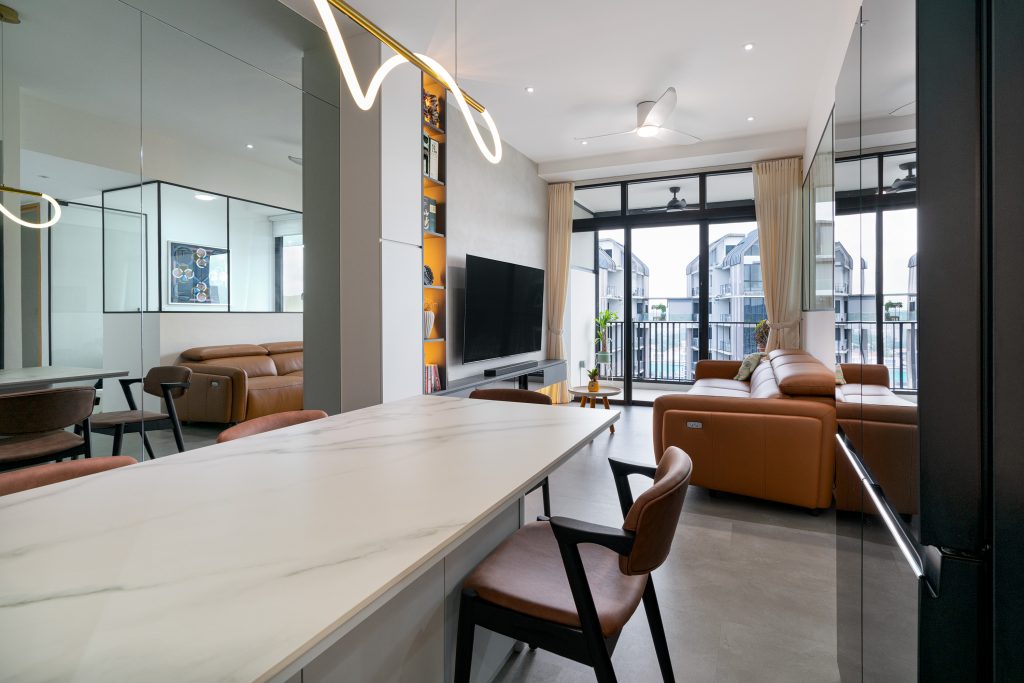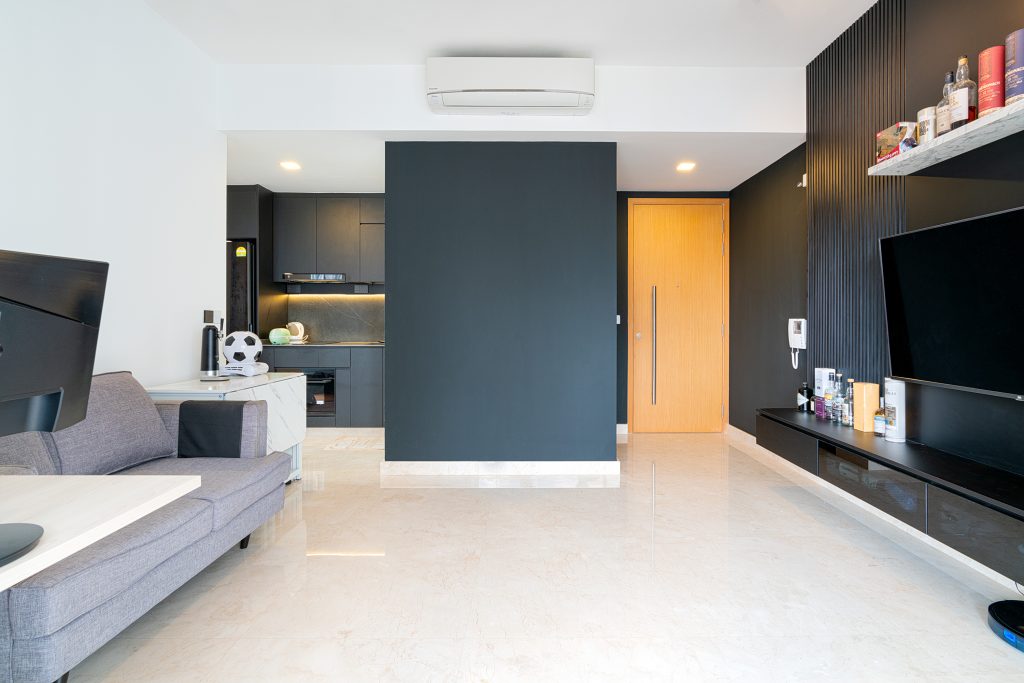Designing the interior of a home or commercial space is much more than simply picking out furniture and decor. To create a truly stunning and functional space, one must adhere to certain principles of design.
These principles include scale and proportion, balance, harmony and unity, rhythm, and focus and emphasis. When used correctly, they can help to create a space that is both aesthetically pleasing and functional.
In this article, we will take a closer look at each of these principles and how they can be applied to interior design.
What is Interior Design?
Interior design is the art and science of enhancing the interior of a building to achieve a healthier and more aesthetically pleasing environment for the people using the space. An interior designer is someone who plans, researches, coordinates, and manages such projects. Interior design is a multifaceted profession that includes conceptual development, space planning, site inspections, programming, research, communicating with the stakeholders of a project, construction management, and execution of the design.
Why do you need interior design?
There are many reasons why you might need interior design for your home. Maybe you’re moving into a new home and want to make it feel like your own, or maybe you’re just tired of your current home’s design and want a change. Whatever the reason, interior design can help you transform your home into a place that feels more like you.
Interior design can also be a great way to boost your home’s value. If you’re thinking of selling your home, a well-designed interior can help you get top dollar for your property. And even if you’re not planning on selling, a good interior design can make your home more enjoyable to live in and increase its resale value down the line.
The 5 Principles of Interior Design
Interior design is the art and science of enhancing the interior of a building to create a more aesthetically pleasing and functional environment for the people who use the space. An interior designer is someone who plans, researches, coordinates, and manages such projects. Interior design is a multifaceted profession that includes conceptual development, space planning, site inspections, installation, and furnishing.
The five principles of interior design are:
Balance
In interior design, balance is one of the most important principles to consider. This principle refers to the distribution of visual weight within a given space. When designing a room, you must take into account the size, shape, and placement of all furniture and décor items. This will ensure that the room feels balanced and cohesive.
There are three main types of balance that you can use in interior design: symmetrical, asymmetrical, and radial. Symmetrical balance is when the left and right sides of a room are mirror images of each other. Asymmetrical balance is when the left and right sides of a room are not identical, but they are still in harmony with each other. Radial balance is when the elements in a room are arranged around a central point.
No matter what type of balance you choose for your space, the goal is always to create a sense of stability and visual interest.

Rhythm
Rhythm is one of the most important principles of interior design. In interior design, rhythm is the repetition of elements that creates a sense of movement. It can be used to create a feeling of harmony and unity in a space. Rhythm is created through the use of line, form, texture, pattern, and color. When these elements are repeated, they create a visual rhythm that can be used to guide the eye through a space.
Rhythm is an important tool for interior designers, as it can be used to create a variety of different effects. It can be used to make a space feel more cohesive and unified, or to create a sense of movement and energy. It can also be used to highlight certain elements in a space, or to create a sense of focal point. By understanding how to use rhythm, you can create spaces that are more visually appealing and effective.
Proportion and Scale
There are many principles of interior design that can be used to create a space that is both functional and aesthetically pleasing. Two of these principles are proportion and scale.
Proportion is the relationships between the different elements in a space. For example, the proportion of a room can be affected by the size of the furniture, the placement of the furniture, and the scale of the patterns in the room.
Scale is the size of an object in relation to another object. For example, a sofa might look small in a large room, but it would look much larger in a small room. The scale of the furniture, the placement of the furniture, and the size of the room all play a role in how the space will look and feel.
Both proportion and scale are important considerations when designing a space. The right proportions can make a space feel open and airy, while the wrong proportions can make a space feel cramped and uncomfortable. Scale, meanwhile, can make a space feel cozy and intimate or grand and imposing.
Getting the proportion and scale of elements right in a space is a challenge, but it’s something that interior designers strive to do in every project. By keeping these two principles in mind, you can create a more balanced and beautiful space in your own home.
Harmony and Unity
After you have understood the basic concepts of balance, rhythm, and scale, you can begin to create harmony and unity in your design. These concepts are essential to creating a pleasing and cohesive design.
Harmony is created when all the elements in a design work together to create a unified look. To achieve harmony, you need to use similar colors, shapes, and textures in your design. Unity, on the other hand, is achieved when all the elements in a design come together to create a cohesive whole. To create unity in your design, you need to use repetition and contrast.
Both harmony and unity are important in creating a successful interior design. By using these principles, you can create a space that is both visually appealing and functional.
Details
Interior design is all about creating a space that is both functional and stylish. But what makes a space truly beautiful? It’s all in the details.
From choosing the right furniture to adding the perfect finishing touches, the details are what make or break a space. Details can make or break a space, and it is important to choose them carefully. The right details can add depth and interest to a space, while the wrong ones can make a space look cluttered and busy.

The advantages using interior design principles
There are many advantages to using interior design principles when planning the layout and design of your home. Perhaps the most obvious benefit is that it can help you to create a more functional and efficient space. By understanding the principles of design, you can make better use of the space you have and create a layout that works well for your needs.
Additionally, using interior design principles can help you to create a more visually appealing space. By applying the principles of design, you can create a space that is more aesthetically pleasing and inviting. This can be especially helpful if you are trying to sell your home, as potential buyers will be more attracted to a well-designed space.
Overall, using interior design principles can have many benefits. By understanding and applying these principles, you can create a space that is more efficient, attractive, and inviting.
How much is the interior design fee in Singapore?
There is no short answer to how much interior design fees in Singapore can cost, as it depends on a variety of factors such as the size of the project, the scope of work, the materials used, and more. That said, most interior design projects in Singapore fall within the range of $2,000 to $20,000.
Of course, if you’re working with a high-end designer on a large project, your costs can easily exceed $20,000. But for most people, interior design fees in Singapore fall somewhere within the aforementioned range.
So, how much should you expect to pay for interior design services in Singapore? It really depends on the project, but the average fee is somewhere between $2,000 and $20,000. Or you can read more about cost in What Are Renovation Contractors In Singapore?

Renovate Your House with Exqsite!
20 years professionals experience
In Exqsite, our team of 20 years professionals experience will make your house beautiful and functional in every aspect, with an eye on detail and perfection. We guarantee you will be satisfied! Here are things that you will get from us:
- We provides high quality workmanship with reasonable prices
- We put our clients first by serving them friendly customer service
- Employees of over 20 years of experience
Make your renovation situation easier with us. Click here for the solution of your renovation problems.

